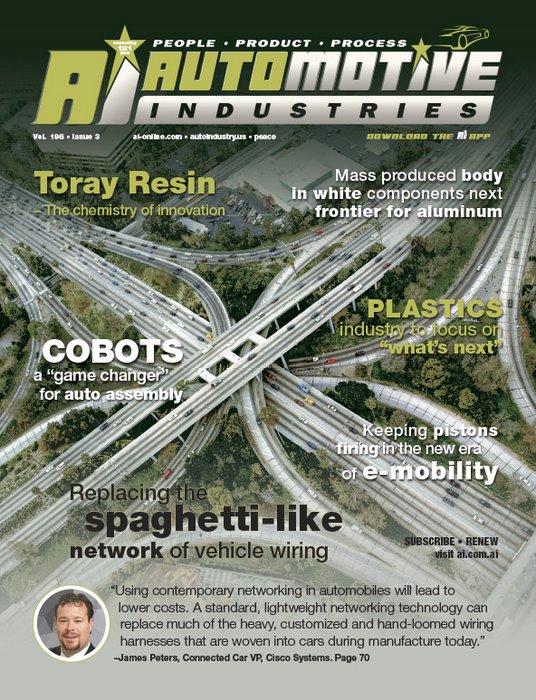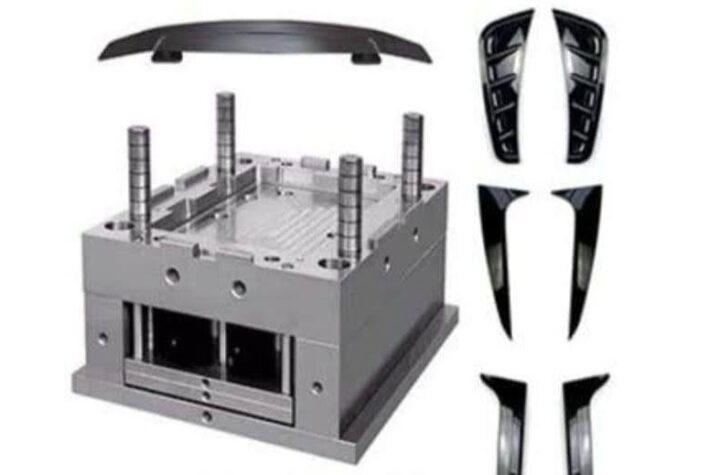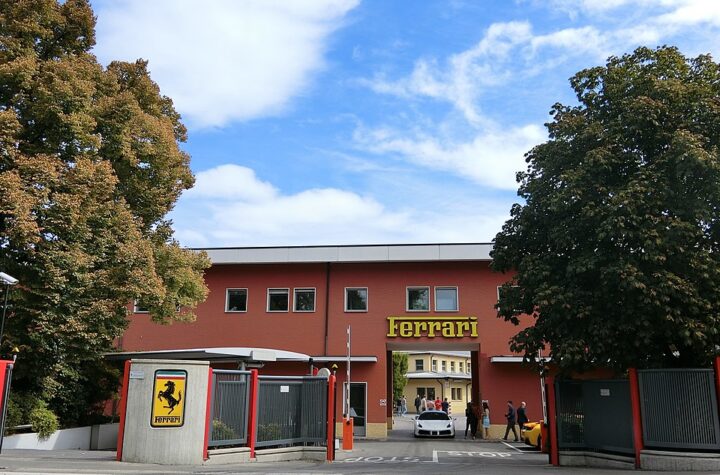
Deep inside every vehicle is an archaic component that’s so central to its function that nothing in the vehicle would work without it. It’s the third-most expensive component, one of the heaviest, and the most unappreciated.
It’s not the engine. It’s the vehicle’s wiring. It’s old-tech, and it’s holding us back: With the current state of car cabling, we’ll never get to true self-driving cars. It’s time to update how we wire our cars.
Car manufacturers have been improving automotive wiring for years. Many components and their electronic control units (ECUs) connect to an in-car network called the CAN Bus. With it, messages go from unit to unit over a shared wire, which is far better than having to connect every component to every other over its own wire.
But CAN Bus is an aging specification, and it can’t serve the needs of modern cars with high-speed sensors and increasing levels of autonomy. As manufacturers introduce more connected elements and devices to their cars, they have to add newer wiring looms to accommodate the new technologies. We are still building cars with spaghetti bowls of wiring, instead of unified networks.
Putting a more contemporary networking architecture into cars will make them more efficient to operate, less expensive to build, safer and more likely to fit into connected transportation infrastructures (“smart cities”). And it is only if we start treating cars as rolling data centers – and giving them networking and bandwidth appropriate for massive and rapid on-board data processing – that they’ll be able to get smart enough to drive themselves. This requires fully digitized car wiring and true sensor integration at the network and security layer.
Meet the New In-vehicle Network
The goal of building a modern in-car network is to enable complete ECU and sensor integration in automobiles. That means that any sensing device in a car, from a window position sensor to a radar scanner, should be available to any computing processes in the vehicle that has reason to see it. More data from more sensors means more input that onboard software can use for autonomous operation, safety and efficiency.
It is also critical that where vehicle control systems are involved, the in-car network is deterministic, which means the time it takes for data to run between two points can be known in advance and relied on to never change. This contrasts with the networks that general-purpose computers use, where the route and time-in-transit for any data packet is, by nature of the Internet Protocol, unknown. A good Internet connection might be sufficient for even high-speed video conferencing almost all the time; but Internet technology doesn’t guarantee that level of performance (and we all know what a bad connection looks like when we’re watching video). Imagine that happening when an image sensor is trying to send a picture of a ladder in the road to a car computer responsible for steering. It’s not a good time to get a “buffering” message.
Many point-to-point connections in cars today are already deterministic, but we believe that proper networking architecture can guarantee deterministic communication between any components in a car. Self-driving car systems need extremely fast, low-latency, absolutely real-time data transfer. You can get this from a network designed from the outset for predictable, real-time transfer. You can’t get it from standard Ethernet – the networking that all non-wireless home and office computer tech uses. Guaranteed delivery for mission critical in-vehicle systems requires Time Sensitive Networking (TSN) enhancements to provide guaranteed delivery time and Quality of Service (QoS) features like prioritized bandwidth.
The Benefits of a More Secure (and Lighter) Network
Putting more connected car technologies on a modern network also means we can build in security. While the current CAN Bus standard allows for some commonality in communication, it doesn’t support critical security best practices. For example, networking signals on CAN Bus aren’t encrypted and don’t contain a sending address. That is not a big issue for cars that don’t receive data from outside sources. But now that cars are becoming citizens of the larger Internet of Things (IoT), they’re also open to network-based hacks. We need to put security into car networking, even for data that’s never supposed to leave the car.
We also need to be able to send data to cars to lower the cost of repairs, to let automakers roll out software improvements as part of recalls (so cars don’t actually have to be “recalled” in all cases), and to integrate cars with smart cities and roads. We can’t do this without a secure system, and that requires a modern network.
Using contemporary networking in automobiles will lead to lower costs. A standard, lightweight networking technology can replace much of the heavy, customized and hand-loomed wiring harnesses that are woven into cars during manufacture today. Weight savings will lead to better fuel economy, and simpler wiring means fewer mechanical wiring failures.
The Road to Autonomy
The ultimate goal for car technology is cars that drive themselves. To get to this point, we need to take full advantage of all the sensors in automobiles, and make it possible for software to act on all the components in cars as well. The advances in machine learning and artificial intelligence we’re seeing now depend on feeds of data – and the more, the better.
Fortunately, we already see some of today’s leading automakers understanding the need for modern networking, including Tesla, which is pioneering the next generation of self-driving vehicles. A former Tesla engineering executive commented, “To enable a fully self-driving car, as we have, you need to have full control over all of the data coming out of all of the sensors and controllers. It has to all be connected and secured. Right now, we have all circuits on a normal harness, but the cost and the weight of that is too big. Someone needs to solve for the power distribution and networking on a lighter harness.”
However, few automakers can support a wholesale transition from their existing wiring to a new automotive network in one model cycle. Even the Tesla Model S has a CAN Bus running alongside its Ethernet network. We expect that for the next five years, transition models will have CAN-to-Ethernet gateways. The data on the Ethernet can feed real-time processing systems and the machine learning tools that will drive autonomy algorithms.
To create highly automated vehicles, automakers must start thinking of cars as integrated rolling data centers and replace the heavy, outdated and costly spaghetti mess of wiring under the hood. Once we have contemporary network architectures, self-driving cars will be on the road to becoming a reality.














More Stories
Renesas Introduces New MOSFETs with Exceptional Performance
VicOne at CES 2025 Showcases Award-winning Cybersecurity Portfolio and Emphasize Growing Range of Best-of-Breed Partnerships
Pioneer Announces e-Boost Order Valued at $1.3 Million